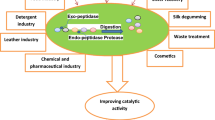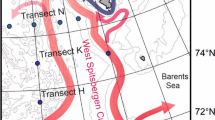Abstract
The freshwater zebra mussel, Dreissena polymorpha, is an invasive, biofouling species that adheres to a variety of substrates underwater, using a proteinaceous anchor called the byssus. The byssus consists of a number of threads with adhesive plaques at the tips. It contains the unusual amino acid 3, 4-dihydroxyphenylalanine (DOPA), which is believed to play an important role in adhesion, in addition to providing structural integrity to the byssus through cross-linking. Extensive DOPA cross-linking, however, renders the zebra mussel byssus highly resistant to protein extraction, and therefore limits byssal protein identification. We report here on the identification of seven novel byssal proteins in the insoluble byssal matrix following protein extraction from induced, freshly secreted byssal threads with minimal cross-linking. These proteins were identified by LC-MS/MS analysis of tryptic digests of the matrix proteins by spectrum matching against a zebra mussel cDNA library of genes unique to the mussel foot, the organ that secretes the byssus. All seven proteins were present in both the plaque and thread. Comparisons of the protein sequences revealed common features of zebra mussel byssal proteins, and several recurring sequence motifs. Although their sequences are unique, many of the proteins display similarities to marine mussel byssal proteins, as well as to adhesive and structural proteins from other species. The large expansion of the byssal proteome reported here represents an important step towards understanding zebra mussel adhesion.






Similar content being viewed by others
References
Allen JA (1985) In: Trueman ER, Clarke MR (eds) The Mollusca. Volume10. Evolution. Academic Press, Orlando
Anderson KE, Waite JH (1998) A major protein precursor of zebra mussel (Dreissena polymorpha) byssus: deduced sequence and significance. Biol Bull 194:150–160
Anderson KE, Waite JH (2000) Immunolocalization of Dpfp1, a byssal protein of the zebra mussel Dreissena polymorpha. J Exp Biol 203:3065–3076
Bonner TP, Rockhill RL (1994) Ultrastructure of the byssus of the zebra mussel (Dreissena polymorpha, Mollusca, Bivalvia). Trans Am Microsc Soc 113:302–315
Claudi R, Mackie GL (1994) Practical manual for zebra mussel monitoring and control. CRC, Boca Raton
Endrizzi BJ, Stewart RJ (2009) Glueomics: an expression survey of the adhesive gland of the sandcastle worm. J Adhes 85:546–559
Farsad N, Sone ED (2012) Zebra mussel adhesion: structure of the byssal adhesive apparatus in the freshwater mussel, Dreissena polymorpha. J Struct Biol 177:613–620
Flammang P, Michel A, Cauwenberge AV, Alexandre H, Jangoux M (1998) A study of the temporary adhesion of the podia in the sea star Asterias rubens (Echinodermata, asteroidea) through their footprints. J Exp Biol 201:2383–2395
Flammang P, Ribesse J, Jangoux M (2002) Biomechanics of adhesion in sea cucumber Cuvierian tubules (Echinodermata, Holothuroidea). Integr Comp Biol 42:1107–1115
Gantayet A, Ohana L, Sone ED (2013) Byssal proteins of the freshwater zebra mussel, Dreissena polymorpha. Biofouling 29:77–85
Gatesy J, Hayashi C, Motriuk D, Woods J, Lewis R (2001) Extreme diversity, conservation, and convergence of spider silk fibroin sequences. Science 291:2603–2605
Gentzel M, Kocher T, Ponnusamy S, Wilm M (2003) Preprocessing of tandem mass spectrometric data to support automatic protein identification. Proteomics 3:1597–1610
Gilbert TW, Sone ED (2010) The byssus of the zebra mussel (Dreissena polymorpha): spatial variations in protein composition. Biofouling 26:829–836
Kamino K (2008) Underwater adhesive of marine organisms as the vital link between biological science and material science. Mar Biotechnol 10:111–121
Lee BP, Messersmith PB, Israelachvili JN, Waite JH (2011) Mussel-inspired adhesives and coatings. Annu Rev Mater Res 41:99–132
Lei M, Wu R (1991) A novel glycine-rich cell wall protein gene in rice. Plant Mol Biol 16:187–198
Ma B, Zhang K, Hendrie C, Liang C, Li M, Doherty-Kirby A, Lajoie G (2003) PEAKS: powerful software for peptide de novo sequencing by tandem mass spectrometry. Rapid Commun Mass Spectrom 17:2337–2342
Morton B (1993) In: Nalepa TF, Schloesser D (eds) Zebra mussels: Biology, impacts and control. Lewis Publishers, Boca Raton
Nicklisch SCT, Waite JH (2012) The role of redox in DOPA-mediated marine adhesion. Biofouling 28:865–877
Rzepecki LM, Waite JH (1993a) The byssus of the zebra mussel, Dreissena polymorpha. I: morphology and in situ protein processing during maturation. Mol Mar Biol Biotechnol 2:255–266
Rzepecki LM, Waite JH (1993b) The byssus of the zebra mussel, Dreissena polymorpha. II: structure and polymorphism of byssal polyphenolic protein families. Mol Mar Biol Biotechnol 2:267–279
Sagert J, Waite JH (2009) Hyperunstable matrix proteins in the byssus of Mytilus galloprovincialis. J Exp Biol 212:2224–2236
Sprung M (1989) Field and laboratory observations of Dreissena polymorpha larvae: abundance, growth, mortality and food demands. Arch Hydrobiol 115:537–561
Stewart RJ, Wang CS (2010) Adaptation of caddisfly larval silks to aquatic habitats by phosphorylation of H-fibroin serines. Biomacromolecules 11:969–974
Stewart RJ, Ransom TC, Hlady V (2011) Natural underwater adhesives. J Polym Sci B Polym Phys 49:757–771
Strayer DL (2009) Twenty years of zebra mussels: lessons from the mollusk that made headlines. Front Ecol Environ 7:135–141
Waite JH, Andersen NH, Jewhurst S, Sun C (2005) Mussel adhesion: finding the tricks worth mimicking. J Adhes 81:297–317
Wang CS, Stewart RJ (2012) Localization of the bioadhesive precursors of the sandcastle worm, Phragmatopoma californica (Fewkes). J Exp Biol 215:351–361
Warner SC, Waite JH (1999) Expression of multiple forms of an adhesive plaque protein in an individual mussel, Mytilus edulis. Mar Biol 134:729–734
Weaver RF (2005) Molecular biology, 3rd edn. McGraw-Hill, New York
Wiegemann M, Watermann B (2004) The impact of desiccation on the adhesion of barnacles attached to non-stick coatings. Biofouling 20:147–153
Xu W, Faisal M (2008) Putative identification of expressed genes associated with attachment of the zebra mussel (Dreissena polymorpha). Biofouling 24:157–161
Yano M, Nagai K, Morimoto K, Miyamoto H (2006) Shematrin: a family of glycine-rich structural proteins in the shell of the pearl oyster Pinctada fucata. Comp Biochem Physiol B Biochem Mol Biol 144:254–262
Yu J, Wei W, Danner E, Ashley RK, Israelachvili JN, Waite JH (2011) Mussel protein adhesion depends on interprotein thiol-mediated redox modulation. Nat Chem Biol 7:588–590
Zhao H, Sun C, Stewart RJ, Waite JH (2005) Cement proteins of the tube-building polychaete Phragmatopoma californica. J Biol Chem 280:42938–42944
Zhao H, Robertson NB, Jewhurst SA, Waite JH (2006) Probing the adhesive footprints of Mytilus californianus byssus. J Biol Chem 281:11090–11096
Zhu YY, Machleder EM, Chenchik A, Li R, Siebert PD (2001) Reverse transcriptase template switching: a SMART approach for full-length cDNA library construction. Biotechniques 30:892–897
Acknowledgments
The authors gratefully acknowledge Trevor and Graham Gilbert for zebra mussel collection, and Paul Taylor and Li Zhang of the Advanced Protein Technology Centre (Hospital for Sick Children, Toronto, ON) for expert advice on LC-MS/MS analysis. This work was supported by a Discovery grant to E.D.S. from the National Sciences and Engineering Research Council (NSERC) of Canada and by an Ontario Graduate Scholarship to A.G.
Author information
Authors and Affiliations
Corresponding author
Electronic supplementary material
Below is the link to the electronic supplementary material.
ESM 1
(DOCX 30 kb)
Rights and permissions
About this article
Cite this article
Gantayet, A., Rees, D.J. & Sone, E.D. Novel Proteins Identified in the Insoluble Byssal Matrix of the Freshwater Zebra Mussel. Mar Biotechnol 16, 144–155 (2014). https://doi.org/10.1007/s10126-013-9537-9
Received:
Accepted:
Published:
Issue Date:
DOI: https://doi.org/10.1007/s10126-013-9537-9




